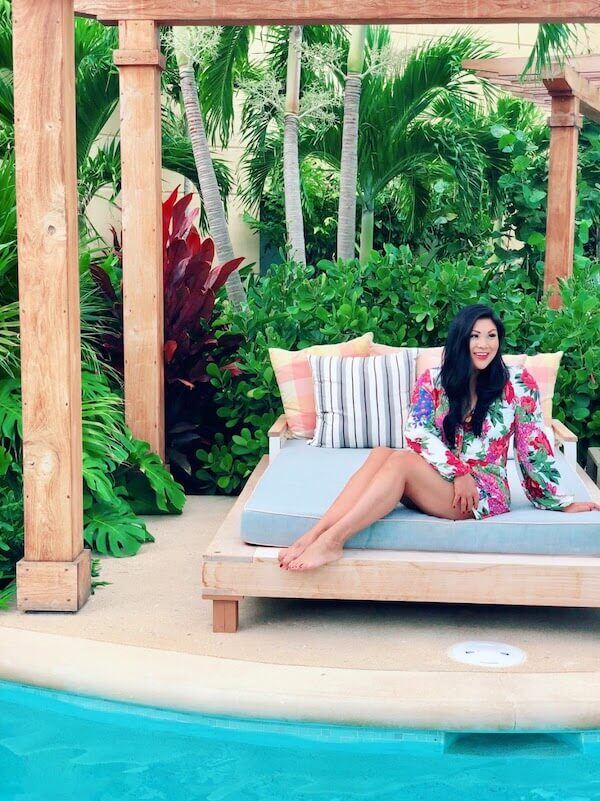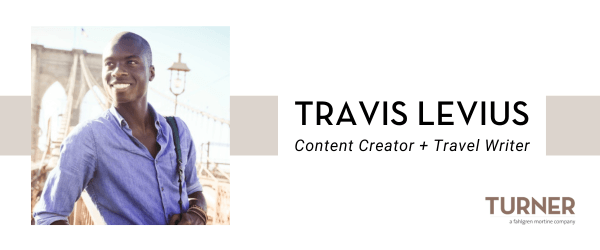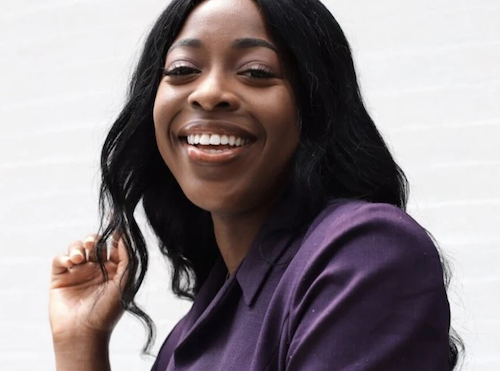TURNER Q&A: Jenn Chan — Fashion, Beauty, Travel and Beyond
Fashion, beauty and style. Entertainment, media and travel. Is there anything Jenn Chan can’t do? The Los Angeles-based writer, editor, on-air...

Emy Rodriguez only made writing his full-time career two years ago. But he's already made considerable headway in the travel and lifestyle space, earning coveted bylines in such top-tier outlets as Harper's Bazaar, Condé Nast Traveler and Country Living. With a holistic viewpoint and an authentic voice, Emy is a natural for TURNER's ongoing Q&A series, which features conversations with some of our favorite writers, bloggers, podcasters, influencers and creators.
It's in my blood. My dad was a pilot and my mom worked for an airline. Seeing my dad fly in and out as a youth really inspired me—and getting to go with him on trips inspired me even more. I've had a few different careers prior to being a travel journalist but being able to travel in my adult life still reminds me of that childhood feeling. Also, as a member of a minority group, I feel that we're not as traveled as we should be. A lot of times, our histories aren't as available to us as in other cultures. So, it's nice to be able to go around the world and pick apart these little places and think, "Oh, am I really from here?" Having that ability to look into other cultures and see the similarities—but also the differences—is a really important perspective to have. I really enjoy that.
What I'm most excited about is creating travel stories that are more essay-like. I want to give readers a real sense of place—not just "This is the best place to go" but getting across a sense of why this culture is there. Why is this their favorite drink? Why is this their favorite meal? Where did those things come from? I'd like to give people more of an anthropologic sense of a place, dive a little deeper. Not just, "Here are five margaritas," but "Where did the margarita come from?" I was just in Mexico, so I've got that on the brain [laughs]. But there's a really interesting story there—it's colorful, it's fun, it's interesting. There's drama! There are so many ways to approach those stories. But those deeper dives are not quite as popular in the mainstream travel outlets.
Well, it's more of a personal thing, but if you don't have a connection to the place you're writing about, think about giving that story to a writer who does. I don't have any history with Fiji, for example. The most that I could do is write about, say, the best hotels in Fiji. But if there's a story to be written that goes deeper into what kind of place Fiji really is? Give that to a writer who has a real connection. Basically, I want to see more authentic voices.
I just started writing at the beginning of the pandemic—so this is my reality [laughs]. It's made it difficult, definitely. There are certain categories within publications that they want now, and you have to find stories that fit those categories. Publications want more and audiences want more. There has to be some meat in the piece to fill it out. There's a lot more intentional travel happening now, and as writers we need to catch up with that trend.
The biggest thing is just being aware of the types of writers you're working with or bringing on a trip. That's an age-old problem that I've heard other journalists talk about. Having two of the same type of writers on a trip might create a conflict. Finding a happy medium in terms of different beats is important there. On FAM trips, it's good if you think of us as humans [laughs]. Don't jam-pack the itinerary—consider that maybe we need 30 minutes to decompress or use the restroom [laughs].
I understand that your clients have all these needs and they want you to show us the best of the best. But it's really about thinking about what the journalist is like and what outlets they're writing for. So, if that rock climbing experience isn't going to be part of the article, is it necessary?
Something really simple? On FAM trips, you guys give us water, which is great—it's important to hydrate. But maybe start using refillable water jugs. The amount of plastic disposable water bottles that I've seen on press trips and events is—very worrying! Cutting down on waste would be great. And also, if we don't end up using the food provided, see if it can go somewhere else instead of just going into the trash.
The biggest thing is to have more diverse staffs at outlets. I think there's been a lot more diversity in the freelance space, but if you look at mastheads, it's often the same people who were there 10 years ago. Seeing more diversity there in terms of LGBTQ+ people and BIPOC people is really important. I will say that in the past year, I've seen a lot more diverse press trips and media events, which is really nice. A few of my first ones were not like that, but it's great to see a diverse group of writers on trips. It can get a little isolating otherwise.
Also, to go back to what I was saying earlier—if you're covering Puerto Rico, give it to a Puerto Rican writer. If you're covering the Dominican Republic, give it to a Dominican writer. There's plenty of us! There's not a lack of resources. It's not a bad thing necessarily to have an outside perspective, but maybe we should be more thoughtful about it. Maybe there's a better way of storytelling. In the next 10 years, I hope that's less of an ask and more just a part of what we do.

Fashion, beauty and style. Entertainment, media and travel. Is there anything Jenn Chan can’t do? The Los Angeles-based writer, editor, on-air...

Freelance writer and editor. Content creator. Tourism marketing consultant. Since making what he laughingly calls "a harrowing leap" into the travel...

From transforming The Cut’s social media presence to founding Every Stylish Girl, a company devoted to elevating Black and Brown women at media...